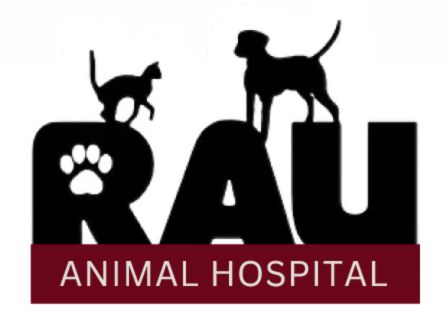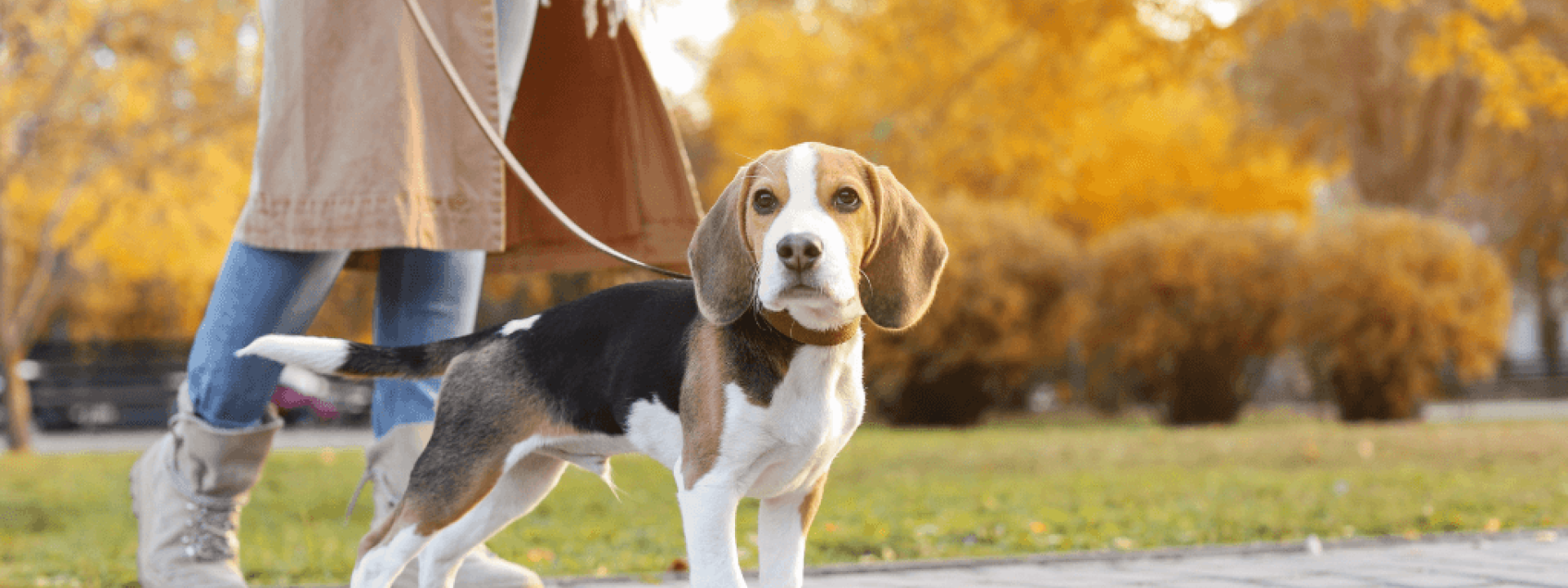Many new dog owners are surprised to learn that their puppy doesn’t instinctively know how to walk politely on a leash. They understand the reality quickly during the first few walks, when their new little fur friend is bolting until they run out of leash or tugging the entire way. Mastering the leash is something that requires training, and it’s surprisingly easy if you know what to do. A few quick steps will have your new puppy “loose leash” walking alongside you instead of pulling you along so that you can both enjoy the many benefits of exercise.
Introduce a Collar or Harness
If they haven’t been wearing one yet, a collar or harness is a new feeling for your puppy that will take some getting used to. Put the collar or harness on them for short periods of time inside, and when they accept it and stop pawing at it, reward them with a treat. This will help them associate their collar or harness with a positive experience.
Teach a Command
Introduce your dog to a sound or word that will become a cue for them that means a treat is coming.
Follow these steps to get your dog to respond and come to you whenever they hear your chosen training word:
- Put your dog on a leash inside and make the sound or say the word you’ve chosen. When your dog turns to you, immediately reward them with a treat.
- Repeat the process until your dog is coming to you when the sound or word is heard.
- After they’ve come to you a few times, start backing up a few steps and only give them the treat as they come toward you.
- Continue this process until your dog is coming to you and walking a few paces with you before you give them the treat.
- Once you’ve mastered the steps above, take your dog outside on the leash. Use the sound or word whenever they get ahead of you, start tugging, or bolt forward to chase something.
Be patient, as the noises, smells, and small animals and birds you encounter outside will be distracting. Only reward your dog with a treat when they respond to the sound or word, and come to you.
Some trainers and dog owners use clicker training to help achieve the above steps. The American Kennel Club offers some tips and benefits of using clickers to communicate with your dog instead of a sound you make or a word you speak.
Correcting Leash Problems in Older Dogs
If you adopted from a shelter or never took the time to leash train your puppy, it’s not too late to teach an older dog how to walk with a leash properly.
The following are the most common bad walking habits older dogs develop and how to correct them:
- Pulling – If your dog constantly yanks the leash and drags you along during walks, stand very still and refuse to walk another step until your dog comes back to you and is ready to proceed. Repeat this until they get the point that you’re not moving if they’re pulling. Bring treats along for positive reinforcement when they proceed without pulling and, instead, walk alongside you.
- Bolting – If your dog lunges for everything they encounter during a walk - such as another dog, a squirrel, a person running, or a stick on the ground - distract them with a treat and try to increase the space between your dog and whatever has gotten their attention. This requires being alert and one step ahead of your dog in terms of what’s approaching or what’s in your walking path.
- Barking – If your dog tends to bark at everything they see during a walk, from squirrels and birds to other dogs and humans, this could be a sign they lack mental and/or physical stimulation. Treat this scenario much like the bolting issue above, and put more space between your dog and its target. Once you proceed and your dog encounters something else that would typically make them bark, give them a treat before they have the opportunity. They’ll begin to associate seeing another dog or a squirrel with turning their attention to you instead.
You’ve likely noticed these tips include giving your dog a lot of treats, which is a necessary part of positive reinforcement training. As their behaviors are corrected and they consistently demonstrate the proper reactions to what they encounter during a walk, you should gradually reduce the treats. However, keep a few treats with you in case you need to reinforce the training at any point.
As with any dog training, patience and consistency are vital components and especially relevant when it comes to leash training. Yanking or pulling your dog out of frustration can harm them, causing neck injuries, ear and eye problems due to restricted blood flow, thyroid damage, and nerve damage to their front legs. Always choose positive reinforcement when leash training, and you’ll not only avoid injury to your dog, but the training will also be much more effective.
If you’ve tried all of these dog walking tips and are still struggling, a certified trainer may be the answer to securing you a future of safe, fun, and fulfilling dog walks. Give us a call, and we’ll be happy to give you a recommendation!

